Fair Isle
The last glaciation of the northern hemisphere some 12,000 years ago created this mystical, intensely verdant, 9 square kilometer stunning island, in the North Atlantic. Fair Isle is Britain’s remotest inhabited island with a resident population of approximately 70, and is found approximately on the same latitude as Southern Greenland. Fair Isle is almost equidistant between the northern limits of the Scottish Orkney Islands (North Ronaldsay Island,) and the southern limit of the Shetland Isles, at Sumburgh Head, 39km away. Fair Isle has been a magnet for birds and ornithologists alike, in both summer and winter, since bird observation began by Dr. William Eagle Clarke in 1905. Birds have been recorded continually on this island by successive generations of ornithologists, using increasingly scientific means, for 107 years. The Fair Isle Bird Observatory, FIBO, is possibly the most famous of the 18 professionally manned bird observatories in Britain and Ireland. The first observatory began in 1948, and now over 60 years on, the latest FIBO, opened in 2009 and costing four million GBP, might just be the most famous bird observatory in the world.
It is worth noting that due to the co ordinates of Fair Isle and its location between the warm Atlantic gulf stream and the cold North Sea, it is less known for its endemic and breeding species of bird than it is known as a ‘fall’ site for birds not only from the Western Paleartic, Europe and North Africa, but also the Eastern Paleartic and the Americas. However, Fair Isle does boast 14 breeding sea birds, an impressive fact for such an isolated 9 square kilometer island. Endemism is poor with only 2 races: the Fair Isle wren and Fair Isle field mouse. However, for its geographic size Fair Isle’s 14 breeding bird species rivals the entire Southern African coast with 16 species of breeding bird! (951 bird species have been recorded in Southern Africa, 111 seabird species, 16 seabird breeders). Compare sub Antarctic South Georgia Island, 160km by 38km with 29 breeding sea birds and 35 Sqkm and UNESCO heritage site Gough Island with 22 species of breeding birds totaling 8,000000 birds!
The concepts of bird migration theory, reverse migration theory and drift migration theory form the basis of how the staggering number of 374 species of birds have been accounted for over the years by the Fair Isle Bird Observatory. These three ornithological migration concepts are the reason Fair Isle had ‘falls’ of an estimated 65,000 redwings (14.10.1979), and a paddy field warbler (26.9.1925) and great bustard in the middle of the darkest coldest days of winter in January 1970. By 2010 FIBO had ringed and released over 350,000 birds.
Although Fair Isle is chiefly an ornithological magnet there are also 238 species of plants, including arctic-alpine varieties, fungi and 107 lichens.

Aerial View Of Fair Isle From The North
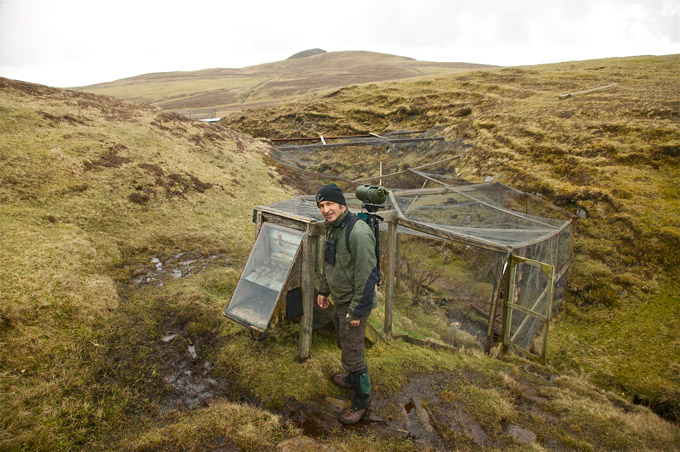
Deryk Shaw & The Heligoland Trap
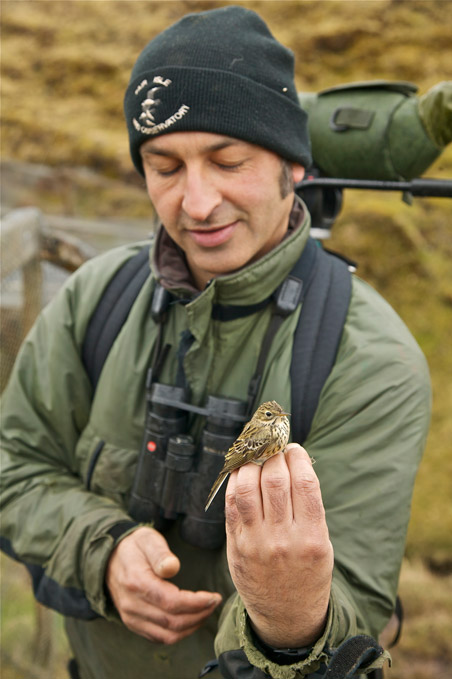
Deryk Shaw And Trapped Bird Ready For Recording & Ringing
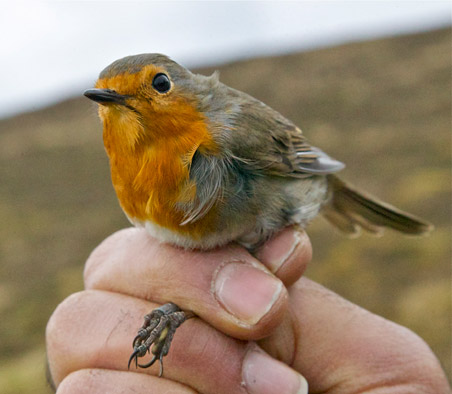
Trapped Robyn Ready For Recording And Ringing
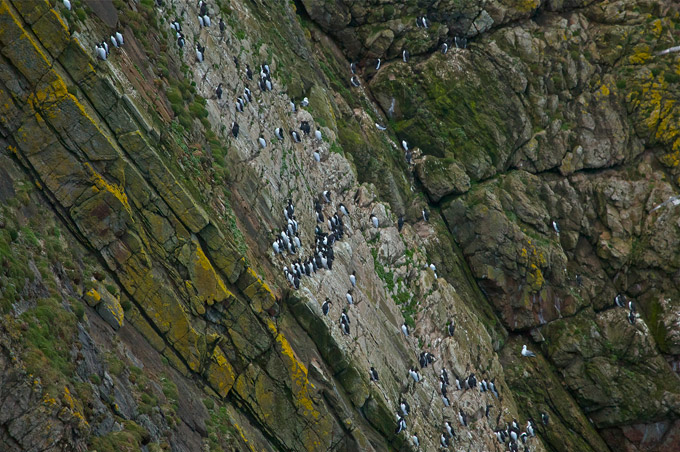
Guillemot Nesting Site Near Skroo
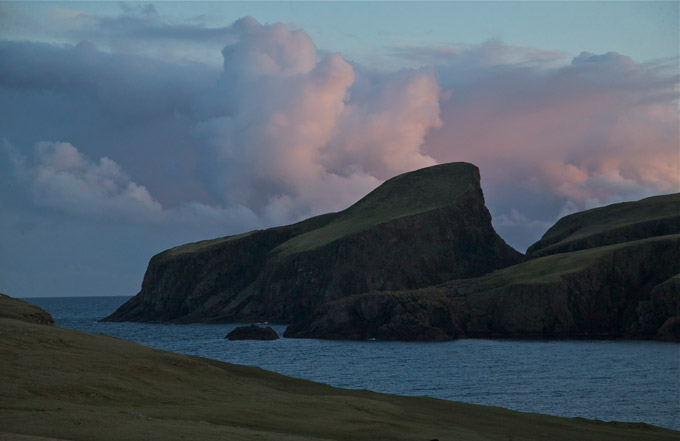
Sheep Rock At Dusk
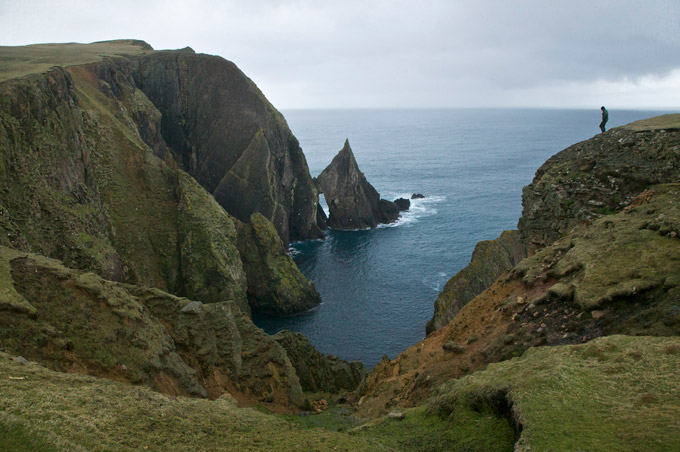
Skroo
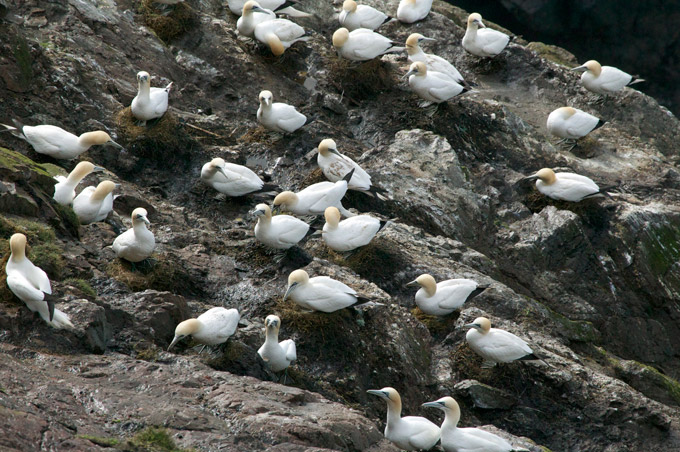
Gannets Nests On Lerness
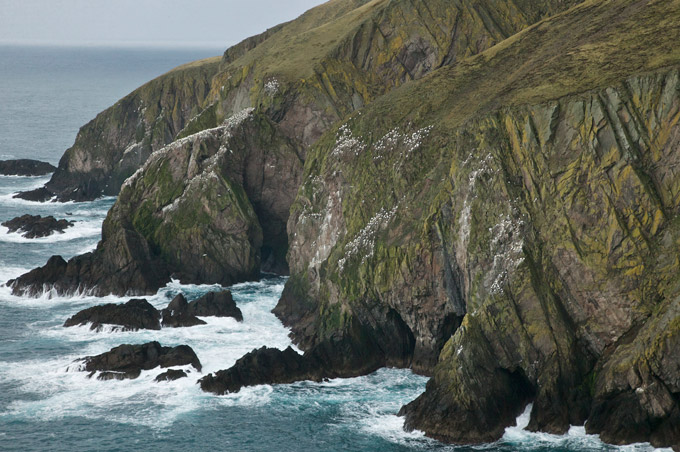
Gannet Nests On Lerness

Ward Hill View
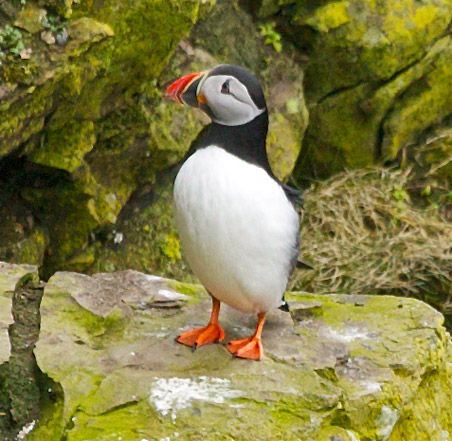
Atlantic Puffin, Buness
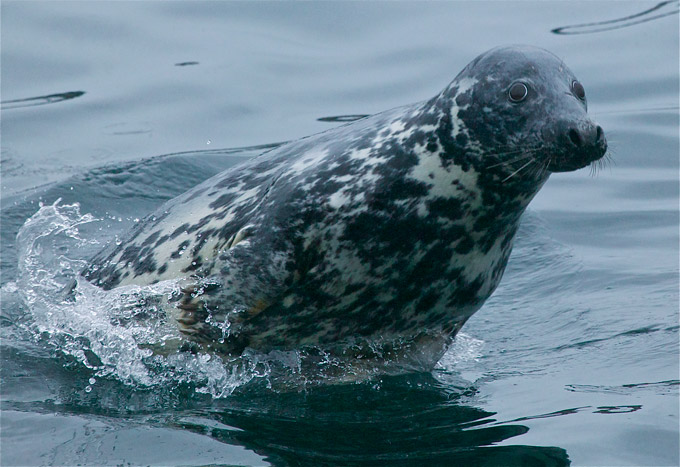
Harbour Seal
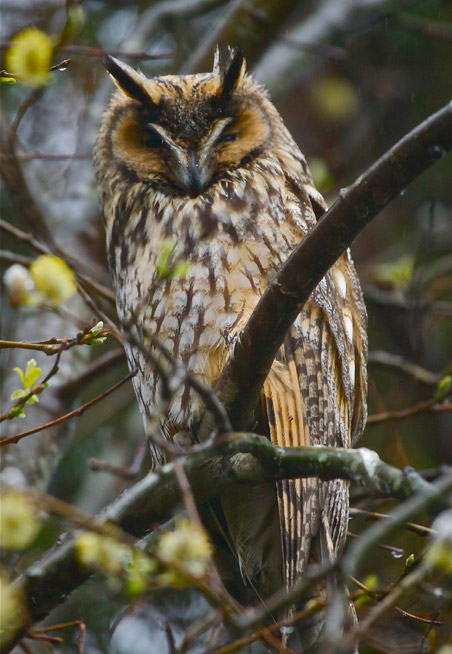
Long Eared Owl
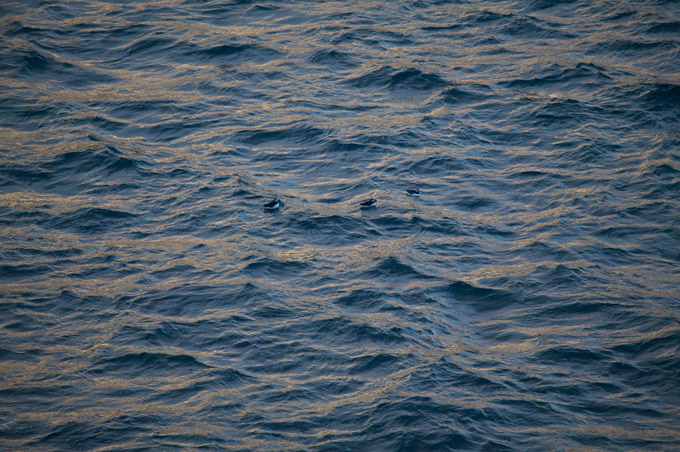
Atlantic Puffins At Dusk In North Haven

Ringing The Robin
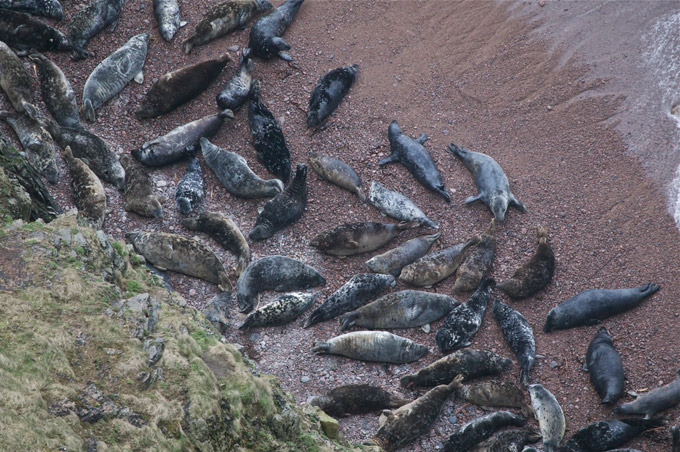
Seals Off Hoini
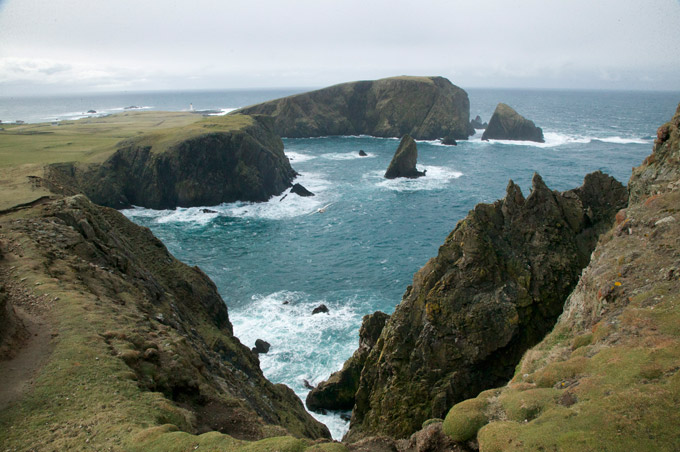
Hasti Geo
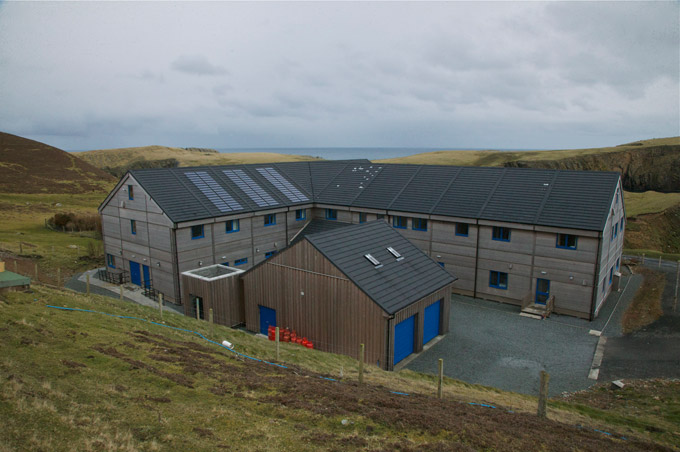
Fair Isle Bird Observatory
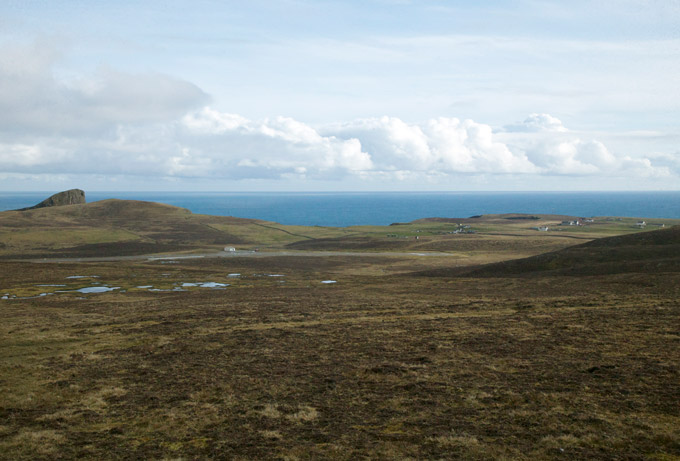
Ward Hill Looking South East and the landing strip
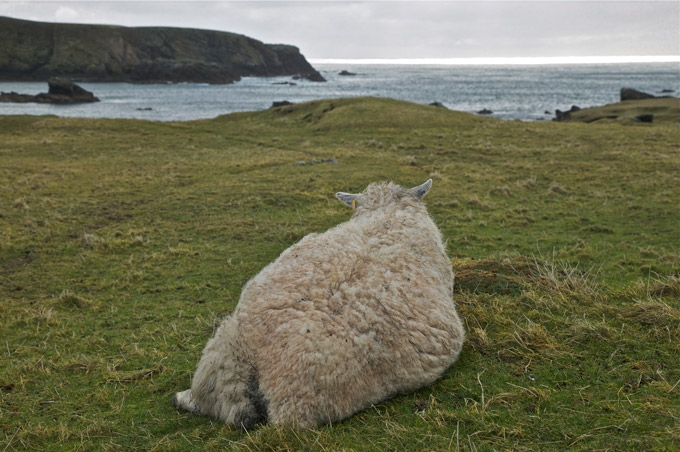
Fair Isle Sheep’s View Near Swartz Geo
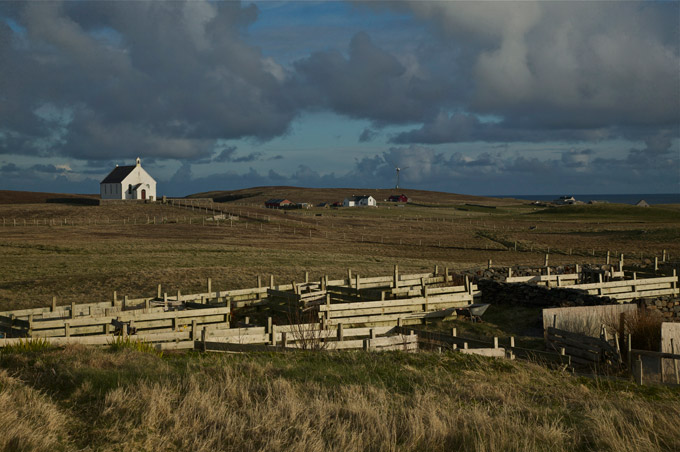
The Kirk
It is estimated that 8 million seabirds visit the British Isles annually to breed. Obviously climatic changes in the industrialized northern hemisphere must eventually impact on the pristine habitat of Fair Isle, in the form of rising sea temperatures and fish stock loss. Commercial overfishing is another problem. The North Sea temperature has risen 2 degrees with a resultant loss of plankton that sandeels feed off. The current greatest threat facing Fair Isle is to the 14 species of breeding sea bird in the form of diminished primary fish stocks. The main breeding sea bird populations on Fair Isle comprise: fulmar, gannet, shag, arctic skua, kittiwake, Arctic tern, guillemot, razorbill and Atlantic puffin. The adaptability of certain sea birds to alter their preferred fish diet to a different food source will see the continued expansion of certain species such as gannet and the demise of the un adaptability of the arctic terns and the auks such as Atlantic puffins and guillemots to fish other than nutritious sandeels.
It is probably safe to say that the Fair Isle guillemot population of 32,437 in 1987, Atlantic puffin population of about 70,000 in 1989 are gone for a generation. The 2012 season revealed no black-legged kittywake chicks fledged. The Arctic tern breeding for 2010 & 2011 was zero. The Arctic terns have also not bred on the more northerly Faroe Islands. Yes, these birds will visit Orkney, Shetland and Fair Isle but there will be no viable breeding. Conversely, sandeels still exist round the Pembrokeshire Welsh coast off Skomer Island and puffin breeding is sustainable.
In my opinion Global warming effects such as fluctuating jet streams and altered weather fronts will create as many new species of bird ‘falls’ as had occurred over the last hundred years.
Besides climate change, another ecological disaster could occur. The islands are in close proximity to two shipping lanes and it would be catastrophic should an oil spill occur from either a North Sea platform disaster or shipping accident. Thankfully neither has happened, yet.
Mercifully, the tiny population of Fair Isle, fewer than 70 individuals, (360 in 1850; 44 in 1956) including some children, all with a conservation survival consciousness, will survive. An island where not one factory exists, with no industrial, chemical or agricultural wastes, greatly determines its own future. Only half the island is committed to sustainable sheep farming and the other half to sustainable crofting. Mostly ornithological tourism (except a handful of ladies producing world renowned artesian Fair Isle knitwear), small cruise ships visiting, sustains the vibrant island community. Of the said 4 islands, Fair Isle leads the way, (with or without sandeels,) as a complete, albeit a Scottish government subsidised, eco tourist destination. It certainly does not look like Fair Isle will go the way of two other British islands, Mingulay and St. Kilda where the elements won the survival battle over millennia of human occupation in 1912 and 1930 respectively.
